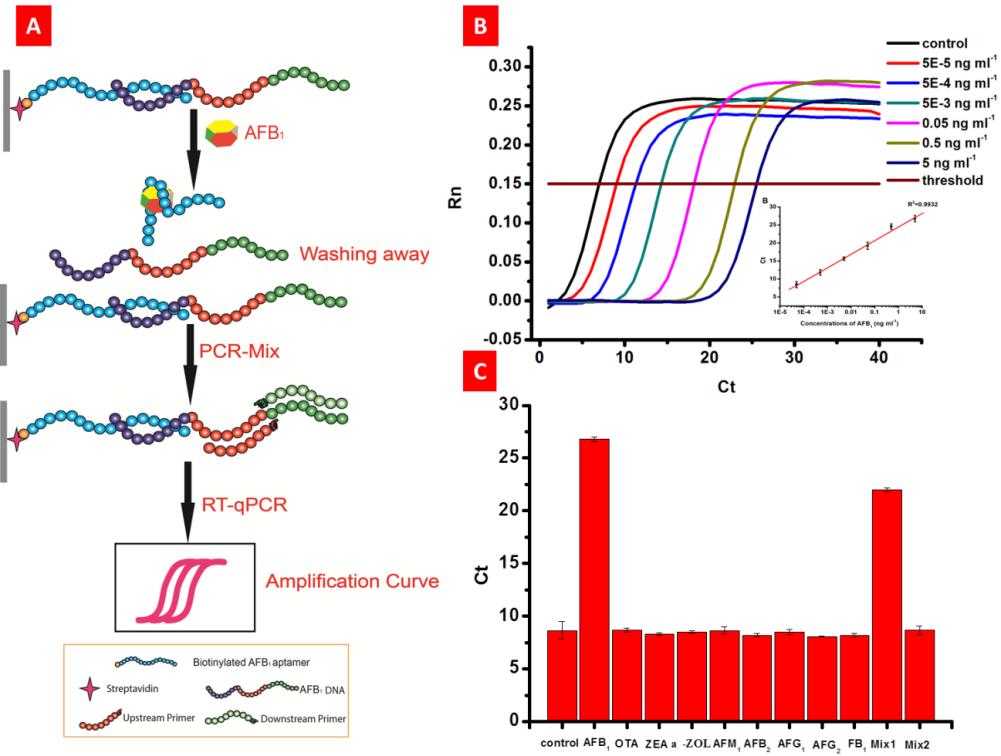An Ultrasensitive Aptasensor for the Detection of Aflatoxin B1 in Baby Food
Source: Author: Date:2014-03-11
Recently, the research team led by Dr. Nan Zheng, Institute of Animal Science (IAS) of Chinese Academy of Agricultural Sciences (CAAS) has made a major progress on the research of key technologies for baby food safety testing. An ultrasensitive aptasensor for the detection of aflatoxin B1 in baby food was developed to safeguard food safety. Corresponding research paper entitled development of an ultrasensitive aptasensor for the detection of aflatoxin B1 has been published on the sixth issue of Biosensors and Bioelectronics in 2014.

Contamination of feed and food by aflatoxin B1 (AFB1), one of the most toxic of the mycotoxins, is a global concern. To prevent food safety scares, and avoid subsequent economic losses due to the recall of contaminated items, methods for the rapid, sensitive and specific detection of AFB1 at trace levels are much in demand. Due to the complexity of food matrix, in order to improve the detection of mycotoxins in food, an ultrasensitive aptasensor was described for the detection of AFB1. An AFB1 aptamer was used as a molecular recognition probe, while its complementary DNA played a role as a signal generator for amplification by real-time quantitative polymerase chain reaction (Figure A). Under optimal conditions, a limit of detection (LOD) = 2.5×10−8 mg/kg was achieved, which was the most sensitive method for AFB1 up to now (Figure B). In addition, the proposed aptasensor exhibited excellent specificity for AFB1 compared with eight other mycotoxins, with no obvious Ct value change (Figure C).